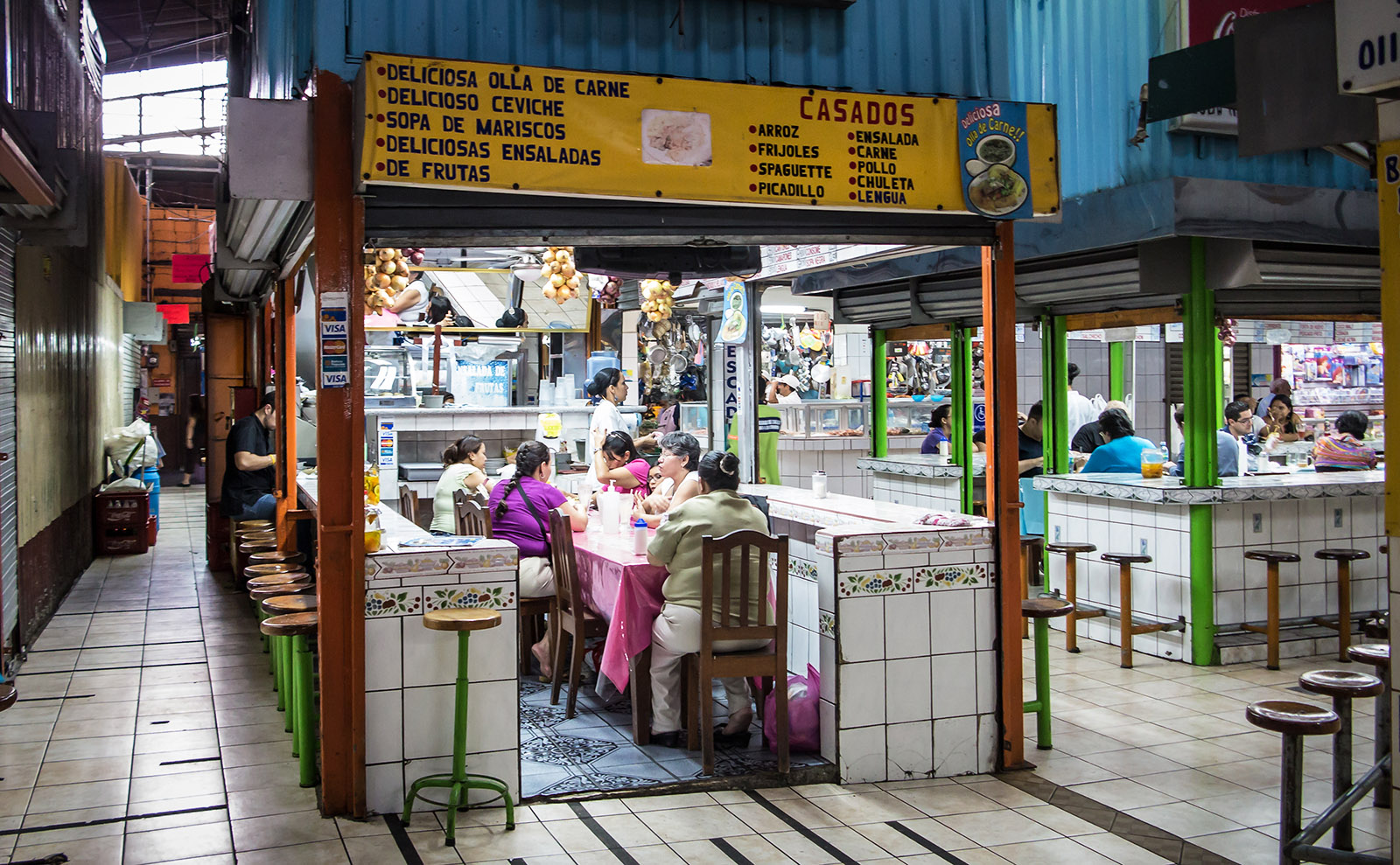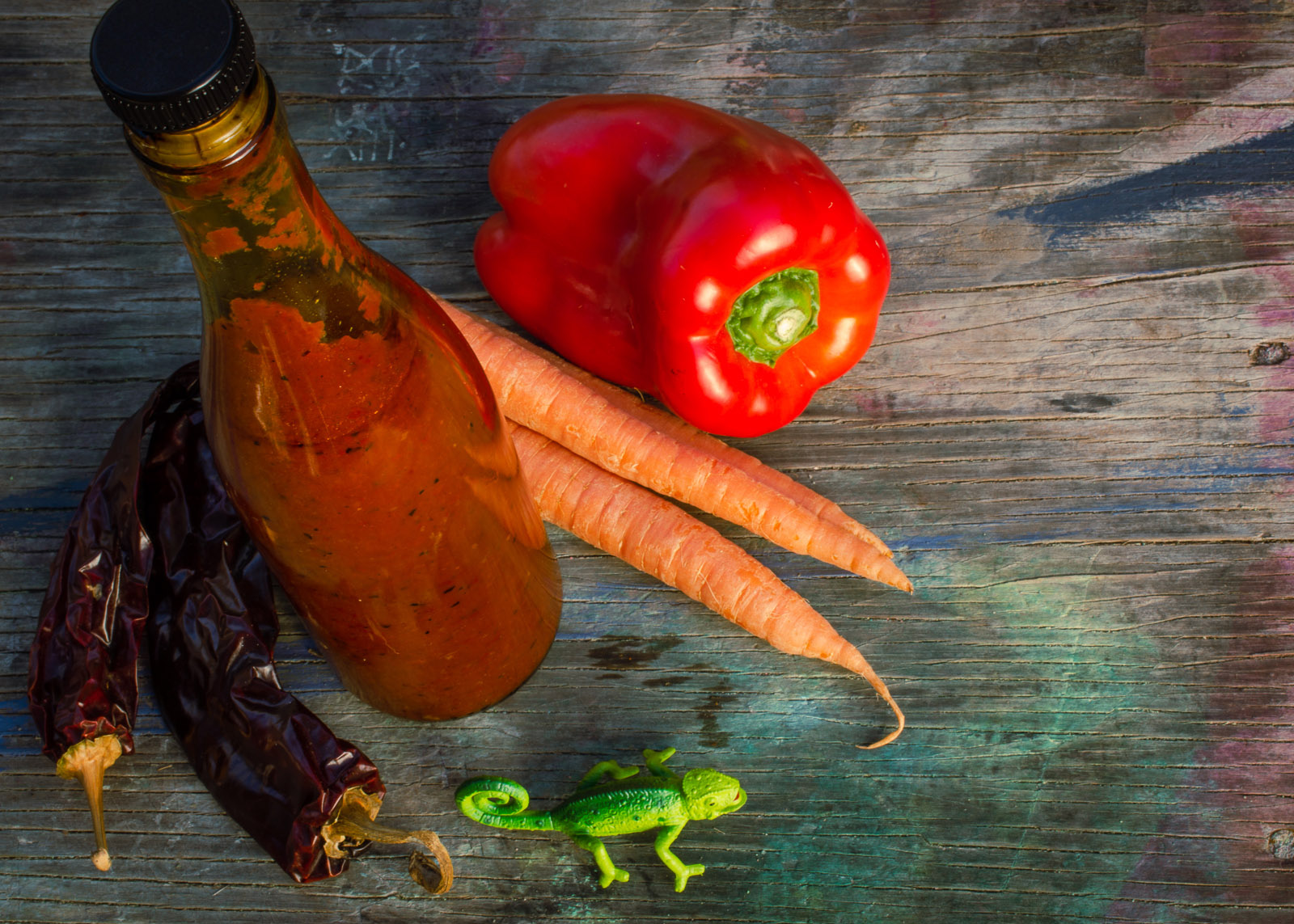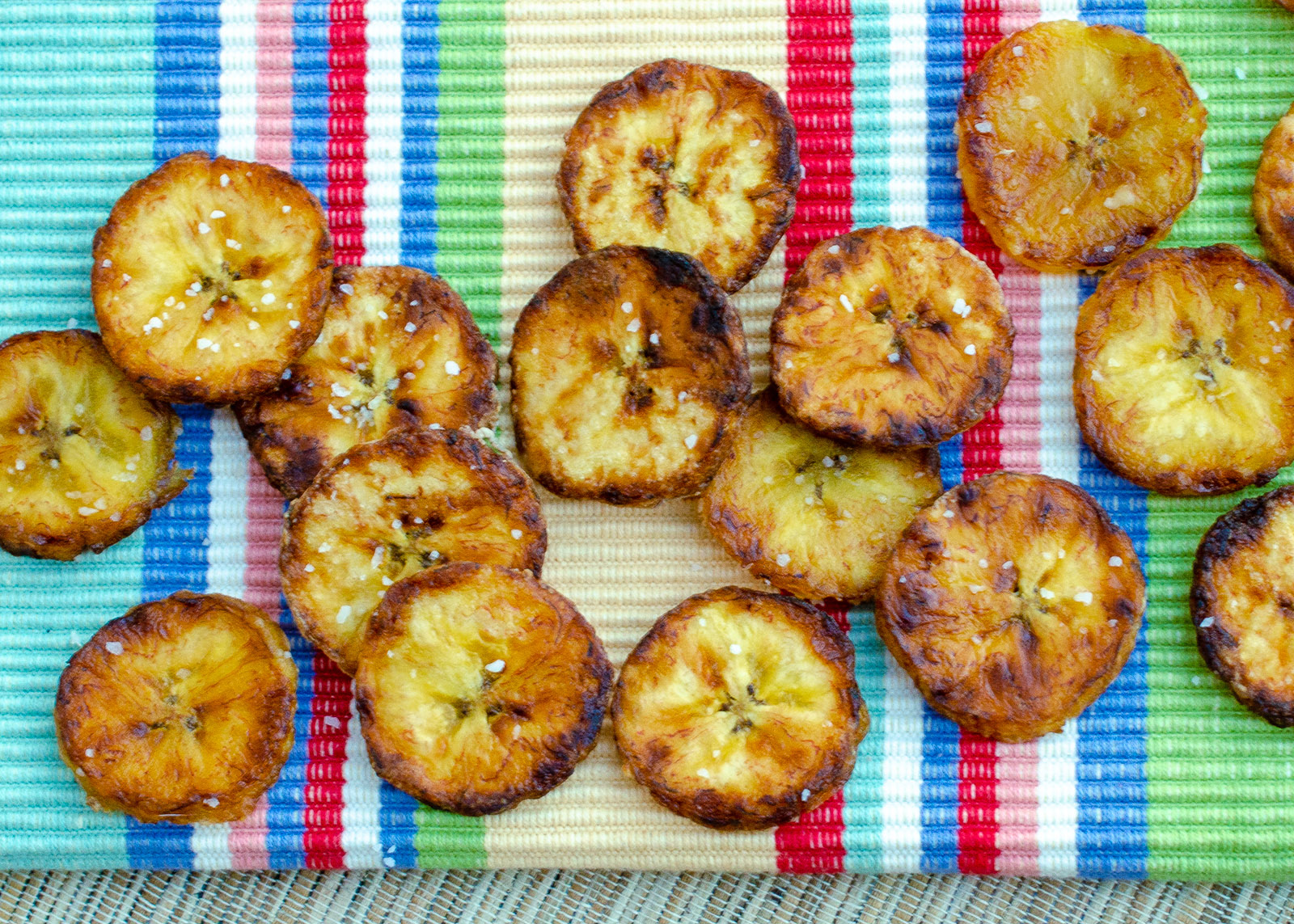
Armchair travel around the world!
Start your reading adventures with our FREE Reading Atlas.

- Around the World in 14 Books
- 7 Thrilling Book Series
- 6 Audiobooks That Are Like Theater For Your Ears



Food and drinks are some of the easiest ways — and the most fun— to vicariously experience another culture. When you add a great book to the mix, you've got the makings of a perfect evening. In Food+Fiction, we recommend a delicious read and a related recipe so you can try the taste of different destinations in your own kitchen.
This post is part of our Food+Fiction series.

Every kitchen table, café counter, hole-in-the-wall booth, and picnic-on-the-go in Costa Rica has a bottle of Salsa Lizano in pride of place. Think of it as Costa Rican ketchup with a kick.
We owe a debt of thanks to Seńor Próspero Jiménez, who created this ubiquitous sauce in his bar in the town of Alajuela — in northwestern Costa Rica — sometime around 1920. It was such a hit with his patrons and friends, he approached a factory that not only started producing vast quantities of the spicy elixir but also established its iconic green label.
The sauce is smooth and full-flavored but not hot, a combo of dried guajillo peppers, carrots, celery, and red bell peppers seasoned with a wallop of cumin and garlic. It’s tangy, spicy, smoky, sweet, and acidic — thanks to the perfect amount of both lemon juice and cider vinegar — and it adds pizzazz to the rice, beans, and plantains that are part of so many Costa Rican meals.
When we visited Costa Rica a few years ago, we fell in love — with the lizards that ran rampant over the landscape, and the bottle of Salsa Lizano was on every table. Back home in the States, we found the real deal online and also created a homemade version for our cookbook.
The short stories in Costa Rica: A Traveler’s Literary Companion are filled with references to homecooked food. Rice, beans, and bananas are almost a mantra in the story ‘In the Shadow of the Banana Tree’ by Carlos Luis Fallas. The lazy-as-a-hot-day narrative gives us a snapshot of a day in the life of a construction crew working to ‘open a great swath through the mountains’ for trains to carry loads of bananas to port. The men trudge through the jungle, bash rock into submission, splash in the river to catch fish, and eat the rice, beans, and bananas cooked by their foreman’s wife.
We can only assume if it had been available to them, they would have doused their meals in Salsa Lizano.
Whether you whip up a jar of your own or buy the original, you’ll want to put it on all the things: Fire up your morning by spooning it onto fried eggs. Drizzle some on Pan-Fried Plantains made from yellow plantains (recipe below) or on green Crispy Plantains. You can also use it as a simmering sauce for chicken, pork, fish, or shrimp. Simply sauté the protein, then add Lizard Sauce, cover, and simmer until cooked through.

Makes 2 cups. Total time 40 minutes.
Prep the peppers. Cut the guajillo peppers in half lengthwise and remove the seeds. Heat a skillet over medium-high heat, about 3 minutes. Add the peppers and toast until starting to brown, about 1 minute per side. Add the water, bring to a boil, and simmer 5 minutes. Put the peppers in a blender or food processor with 1 cup of the water from the pan.
Cook the veggies. Dry the pan and add the cooking fat. Warm the pan over medium-high heat, about 3 minutes. Add the onion, carrot, celery, bell pepper, and garlic. Sauté until soft and beginning to turn golden, 5-7 minutes. Add the cumin, salt, and cayenne, stirring until fragrant, about 30 seconds. Turn off the heat, add the lemon juice and vinegar; stir to combine.
Purée, baby. Remove the vegetables from the pan and carefully add them to the jar of a blender or food processor. Purée until smooth. (If you have an immersion blender, transfer the mixture to a wide-mouth jar to purée.)
Big finish. Allow the flavors to meld about 10 minutes before using, then eat at room temperature or chilled on anything and everything. Store covered in the refrigerator for up to 3 weeks.

Serves 2-4. Total time 15 minutes.
Prep the plantains. The easiest way to peel them is to cut off both ends, then make shallow slits along the ridges in the skin that run lengthwise. Use your fingers to pry off the strips of skin. Slice the plantains into 1/4-inch thick coins.
Cook the plantains. Place the cooking fat in a large skillet over medium-high heat, warm for 3 minutes. Add the plantain slices in a single layer and allow them to brown on the bottom, 2-3 minutes. Flip and brown the other side. Keep a close eye on them; the sugars in the plantains can turn from brown to black in a blink.
Big finish. When you’re happy with the color, sprinkle generously with salt and a bit of cumin. Remove to a serving plate and squeeze fresh lime juice over the top. Eat immediately. Fork optional.
We’d go into the meal-hall, lit by neon light and sit on the bench at a long table, where the platters of boiled bananas were already steaming. From the kitchen we could hear the sweet, timid voice of the patrona his wife: ‘Goo mornin’ muchacos.’ — In the Shadow of the Banana Tree, Carlos Luis Fallas (translated by Will Kirkland)
The 26 short stories in this compelling collection — written in Spanish by 20th-century Costa Rican authors and beautifully translated — are arranged by geography. When read in order, they’ll take you on a literary journey from the north near Nicaragua, then head to the capital region of San Jose. Next, you’re off to the sunny beaches of both coasts to end your trip at the southern border. Along the way, you’ll be swept away by all genres: thrillers, magical realism, literary meditations, fairy tales and fables, stories of revenge, and 19th-century morality tales. The common thread? Vividly rendered settings that place you firmly in the jungles, villages, cities, and beaches of Costa Rica — against which family drama, history, colonialism, and daily life unfold. {more}
This short story collection (256 pages) was published in March of 1994 by Whereabouts Press. The book takes you to all regions of Costa Rica. Melissa read Costa Rica and loved it; it wouldn't be on our site if she didn't recommend it.
Bookshop.org is an online bookstore with a mission to financially support independent bookstores and give back to the book community.
Top image courtesy of Daniel Korzeniewski/Shutterstock.
Want to keep up with our book-related adventures? Sign up for our newsletter!
Can you help us? If you like this article, share it your friends!
Strong Sense of Place is a website and podcast dedicated to literary travel and books we love. Reading good books increases empathy. Empathy is good for all of us and the amazing world we inhabit.
Strong Sense of Place is a listener-supported podcast. If you like the work we do, you can help make it happen by joining our Patreon! That'll unlock bonus content for you, too — including Mel's secret book reviews and Dave's behind-the-scenes notes for the latest Two Truths and a Lie.
Join our Substack to get our FREE newsletter with podcast updates and behind-the-scenes info — and join in fun chats about books and travel with other lovely readers.

We'll share enough detail to help you decide if a book is for you, but we'll never ruin plot twists or give away the ending.
Content on this site is ©2026 by Smudge Publishing, unless otherwise noted. Peace be with you, person who reads the small type.